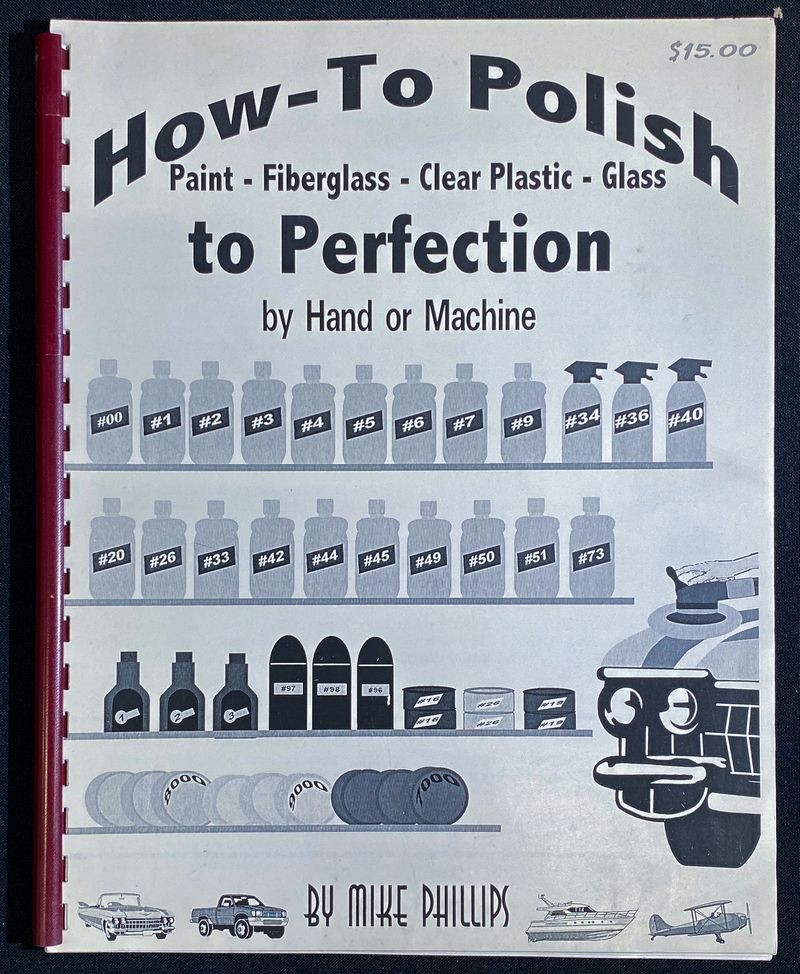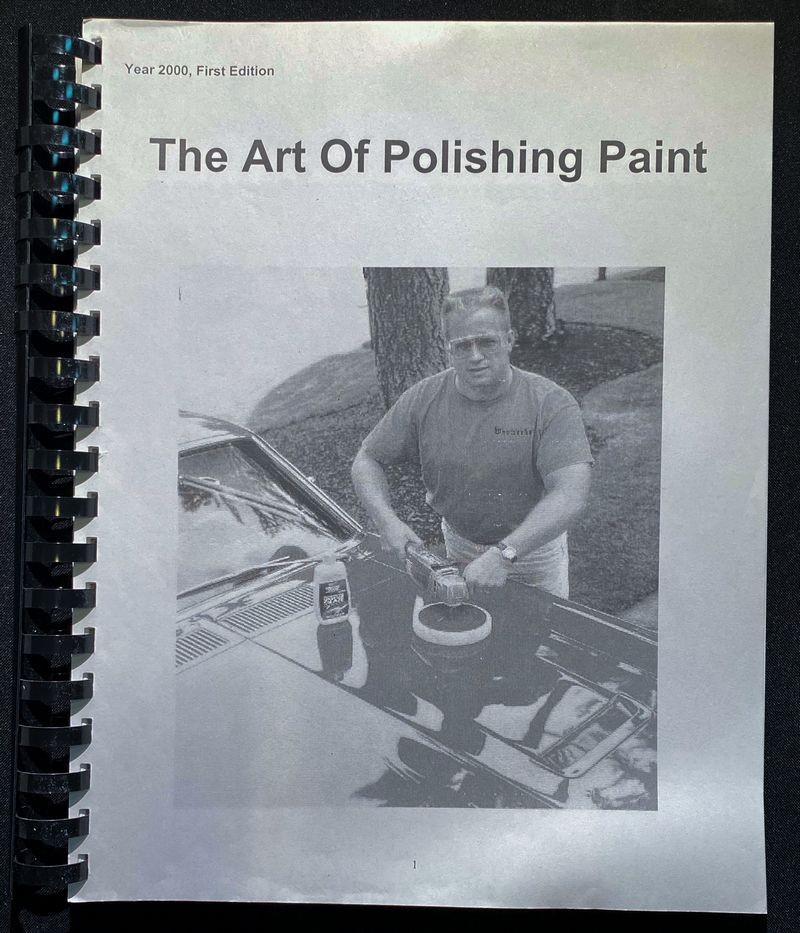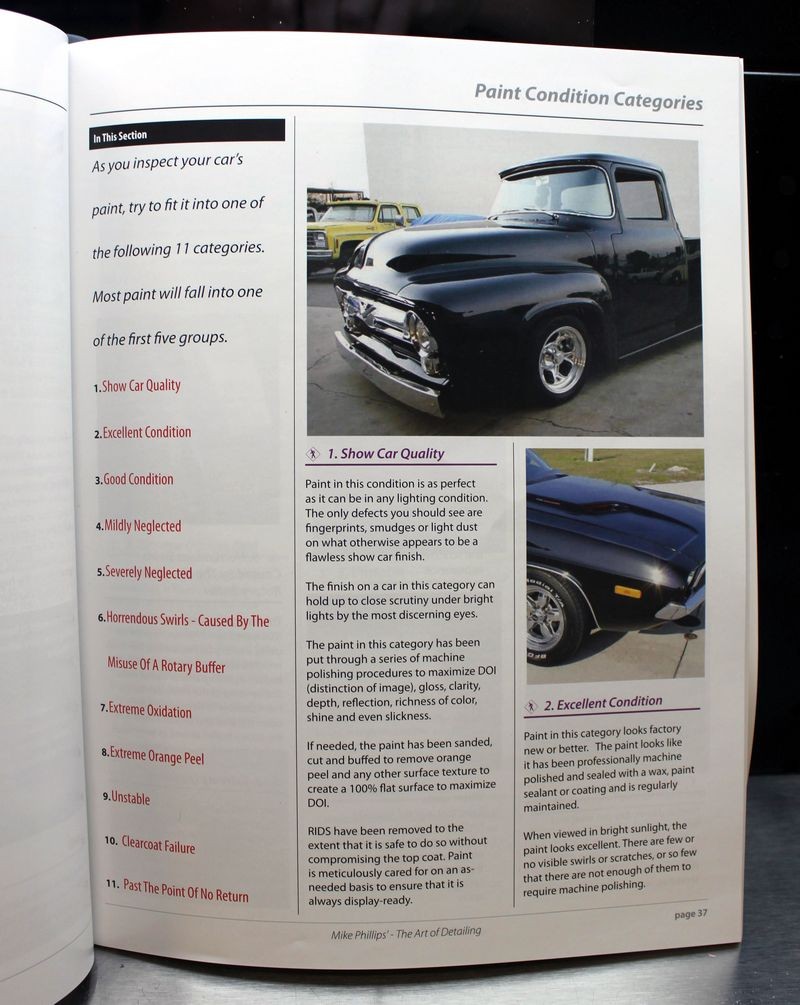2black1s
New member
- Jan 23, 2015
- 1,783
- 1
Mike,
What a great video! And what a nice paint specimen in the Chevelle.
Photo's can certainly be deceiving... that Chevelle looks beautiful and you would never guess that it was a swirled mess until you put the swirl finder light on it.
The paint job also appears to be of a very high quality... Comparable to some of my prior works. I couldn't see any waviness in the paint and that to me is an indication of a top-notch paint job that was flawlessly prepped for and applied, and I'd bet the farm it was sanded between coats at least a time or two during the process. You just can't get that kind of finish by loading the paint on and then sanding only once immediately prior to compounding/polishing. Again, these observations are based solely by what I can see in the photos.
The content and presentation are as nearly perfect as anyone could hope for.
For anyone embarking on their first machine polishing and those early in the process of honing their skills this is a “must see”. In fact, I sent a link to a friend of mine who I’ve helped in the past. You’re a much better teacher than I am and I think he will get more from your video than from me first-hand.
Then, for those of us with more experience it’s a great refresher.
From a constructive critique perspective, I have two comments…
At 35:20;
You are running the polisher on the surface without moving it while you’re explaining how to adjust the polisher speed. Obviously, being in the “instructor” mode contributed to this situation, and you didn’t have much pressure on the polisher, but nevertheless that is certainly not a best practice that someone learning would want to do. Keeping the polisher moving is a good rule of thumb for anyone/anytime.
At 48:45;
The audio preceding indicates that you are compounding the finish at this point, but I can tell by the pad that you are actually applying wax. Point being, anyone compounding wouldn’t want to, or at least they shouldn’t want to, run the polisher across the body line in the fender in the vertical up and down motion depicted. Edges and body lines require special attention, and especially so during the more aggressive processes, like compounding.
During this holiday I've been spending some free-time reading through many of your "How To" threads. What a wealth of knowledge you have documented in this forum! The way you share that knowledge is nothing short of incredible.
What a great video! And what a nice paint specimen in the Chevelle.
Photo's can certainly be deceiving... that Chevelle looks beautiful and you would never guess that it was a swirled mess until you put the swirl finder light on it.
The paint job also appears to be of a very high quality... Comparable to some of my prior works. I couldn't see any waviness in the paint and that to me is an indication of a top-notch paint job that was flawlessly prepped for and applied, and I'd bet the farm it was sanded between coats at least a time or two during the process. You just can't get that kind of finish by loading the paint on and then sanding only once immediately prior to compounding/polishing. Again, these observations are based solely by what I can see in the photos.
The content and presentation are as nearly perfect as anyone could hope for.
For anyone embarking on their first machine polishing and those early in the process of honing their skills this is a “must see”. In fact, I sent a link to a friend of mine who I’ve helped in the past. You’re a much better teacher than I am and I think he will get more from your video than from me first-hand.
Then, for those of us with more experience it’s a great refresher.
From a constructive critique perspective, I have two comments…
At 35:20;
You are running the polisher on the surface without moving it while you’re explaining how to adjust the polisher speed. Obviously, being in the “instructor” mode contributed to this situation, and you didn’t have much pressure on the polisher, but nevertheless that is certainly not a best practice that someone learning would want to do. Keeping the polisher moving is a good rule of thumb for anyone/anytime.
At 48:45;
The audio preceding indicates that you are compounding the finish at this point, but I can tell by the pad that you are actually applying wax. Point being, anyone compounding wouldn’t want to, or at least they shouldn’t want to, run the polisher across the body line in the fender in the vertical up and down motion depicted. Edges and body lines require special attention, and especially so during the more aggressive processes, like compounding.
During this holiday I've been spending some free-time reading through many of your "How To" threads. What a wealth of knowledge you have documented in this forum! The way you share that knowledge is nothing short of incredible.



